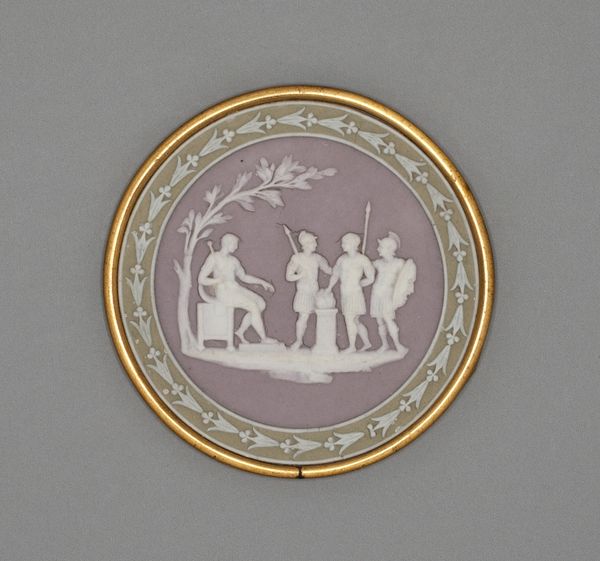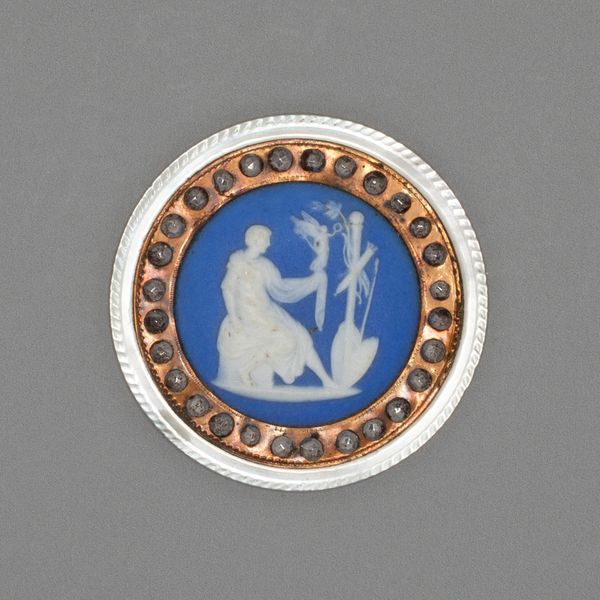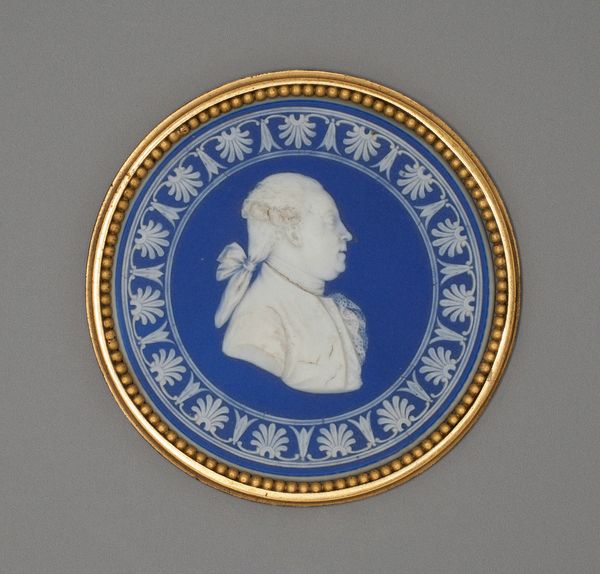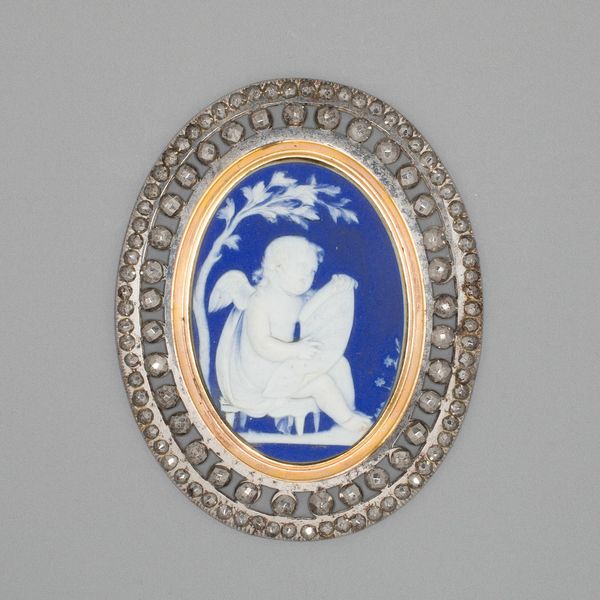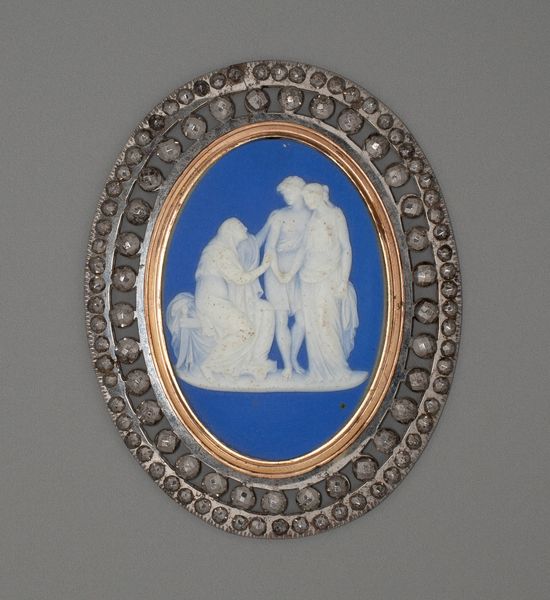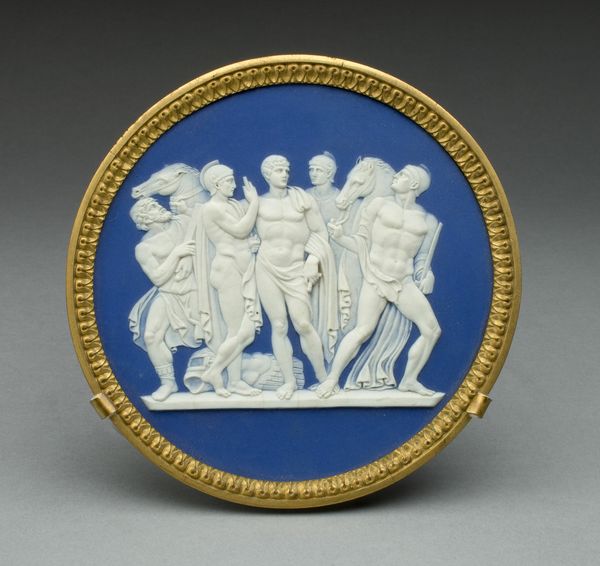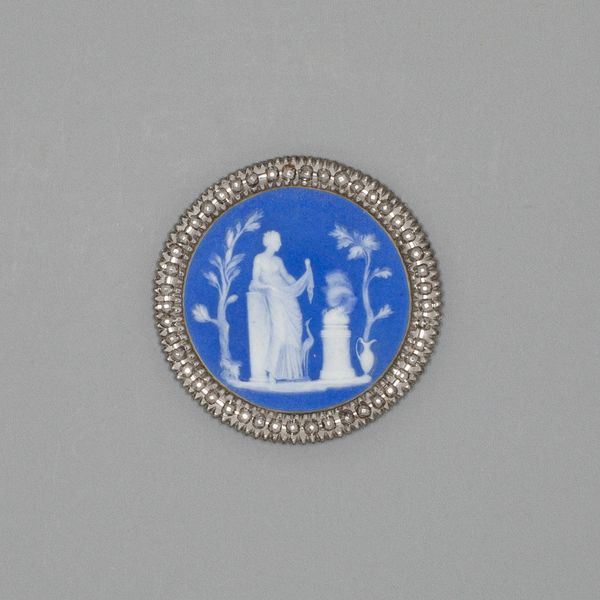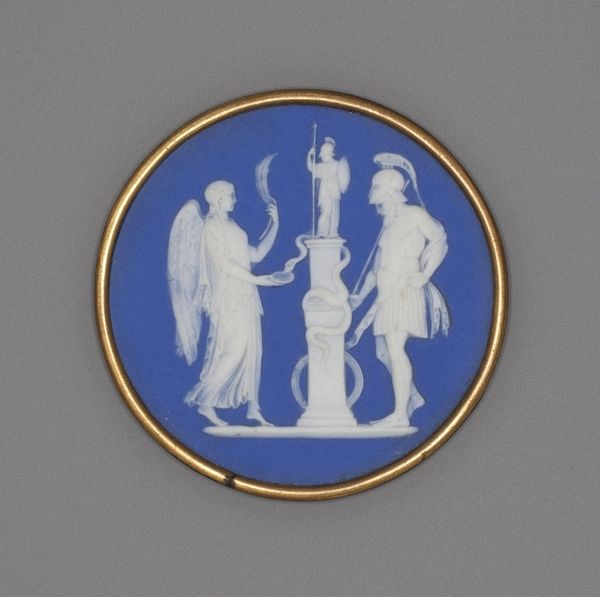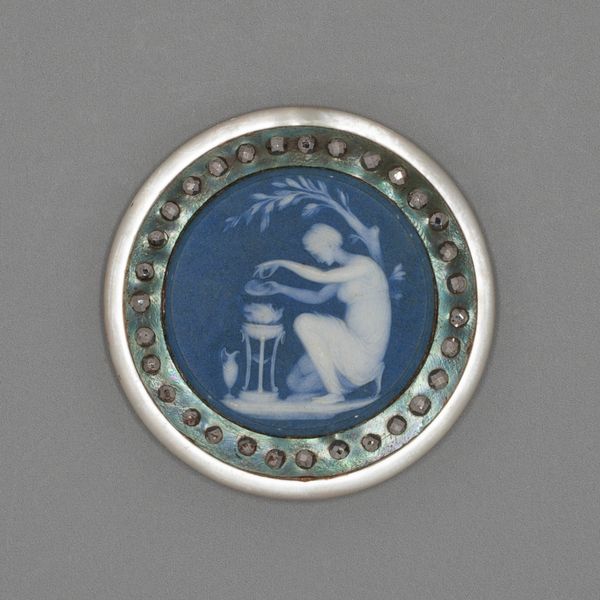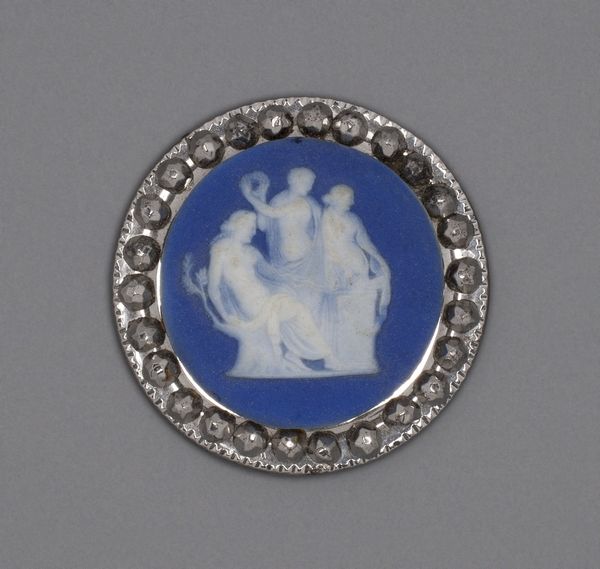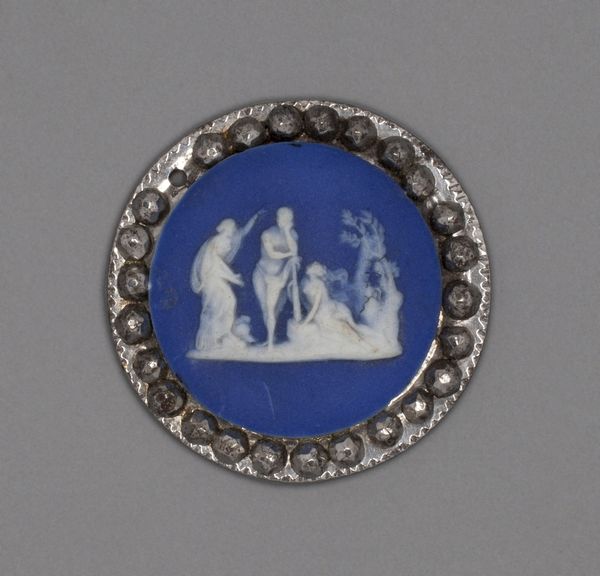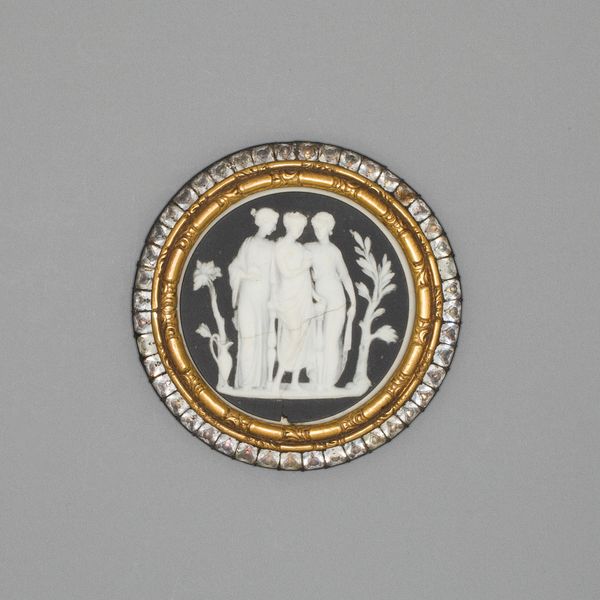
Medallion with Sacrifice to Hygieia c. late 18th century
0:00
0:00
ceramic, inorganic-material, sculpture
#
portrait
#
neoclacissism
#
decorative element
#
blue and white
#
war
#
ceramic
#
classical-realism
#
figuration
#
historical fashion
#
inorganic-material
#
geometric
#
sculpture
#
history-painting
#
decorative-art
Dimensions: Diam. 4.1 cm (1 5/8 in.)
Copyright: Public Domain
This delicate medallion was made by the Wedgwood Manufactory, using their signature Jasperware technique. This involved carefully layering contrasting colors of unglazed porcelain, to create a cameo effect. The blue background and white figures are characteristic of Wedgwood’s aesthetic, drawing inspiration from ancient Greek and Roman designs. Here, we see a scene with Hygieia, the Greek goddess of health, being offered a sacrifice. But beyond the classical imagery, it’s important to consider the industrial processes that made Wedgwood so successful. Each medallion required skilled labor, from the mixing of the clay to the precise molding and firing. Wedgwood was a pioneer of mass production, but also took great pride in the quality and design of his wares. He harnessed division of labor to boost production, but also invested in new technologies, like the pyrometer. His company’s work embodies the complex relationship between art, industry, and commerce in the late 18th century. It blurs the boundaries between art and craft, between unique creation and industrialized production.
Comments
No comments
Be the first to comment and join the conversation on the ultimate creative platform.
